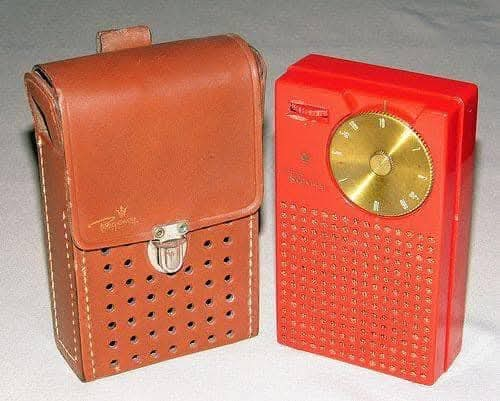
ADVERTISEMENT
The Evolution of the Transistor Radio: A Timeless Icon of Communication
Introduction
The transistor radio represents one of the most significant innovations in communication and entertainment during the 20th century. Compact, portable, and revolutionary for its time, this small device allowed people to stay connected to news, music, and broadcasts anywhere they went. Its introduction marked the beginning of a cultural and technological shift that brought entertainment into the hands of the masses. In this article, we will explore the history, impact, and nostalgic charm of the transistor radio, using the classic design in the image as a representation of its golden age.
The Birth of the Transistor Radio
The invention of the transistor in the late 1940s paved the way for the creation of the transistor radio. Prior to this, radios relied on bulky vacuum tubes, which made them large, heavy, and unsuitable for portability. In 1954, Regency introduced the first commercially available transistor radio, the TR-1. This innovation was a game-changer, as it combined portability with affordability, allowing people from all walks of life to enjoy radio broadcasts on the go.
The red transistor radio and leather case depicted in the image embody the sleek, colorful, and user-friendly designs that became popular in the following decades. Its compact size, bold color, and protective case made it both functional and fashionable, appealing to a wide audience, especially young music enthusiasts.
Impact on Society and Culture
The transistor radio revolutionized how people consumed media. For the first time, individuals could listen to their favorite radio programs while traveling, picnicking, or relaxing outdoors. It became a symbol of freedom and independence, especially for the youth of the 1950s and 1960s.
ADVERTISEMENT
During the rise of rock ‘n’ roll, transistor radios became an essential item for teenagers who wanted to stay connected to the latest hits. They carried these pocket-sized devices to parks, beaches, and gatherings, sharing music with friends and shaping a new culture of shared experiences. The portability of the transistor radio also played a vital role in news dissemination, as people could stay informed about current events no matter where they were.
The Timeless Appeal
Despite the advancements in technology, the transistor radio remains a nostalgic icon for many. Its simplicity, durability, and charm make it a sought-after collector’s item today. The red radio in the image, paired with its leather case, is a classic example of mid-century design that combined aesthetics with practicality.
For collectors and enthusiasts, such models are not just devices but pieces of history. They symbolize a time when technology was becoming more accessible and when music and news began to unite people across the globe. Many individuals still cherish the memories of tuning into their favorite stations and the joy of hearing music through the crackling sound of a transistor radio.
Conclusion
The transistor radio transformed the way people interacted with media and each other. It brought news, music, and entertainment into the hands of millions and became a symbol of mobility and cultural revolution. The classic red transistor radio with its leather case represents a bygone era of innovation and style, reminding us of the simplicity and charm of early portable technology.
Today, while smartphones and streaming services dominate, the transistor radio remains a timeless reminder of how a small device can have a massive impact on society. Its legacy endures in the hearts of those who lived through its heyday and in the hands of collectors who continue to preserve its history.
ADVERTISEMENT
Title: The Evolution of the Transistor Radio: A Timeless Icon of Communication




